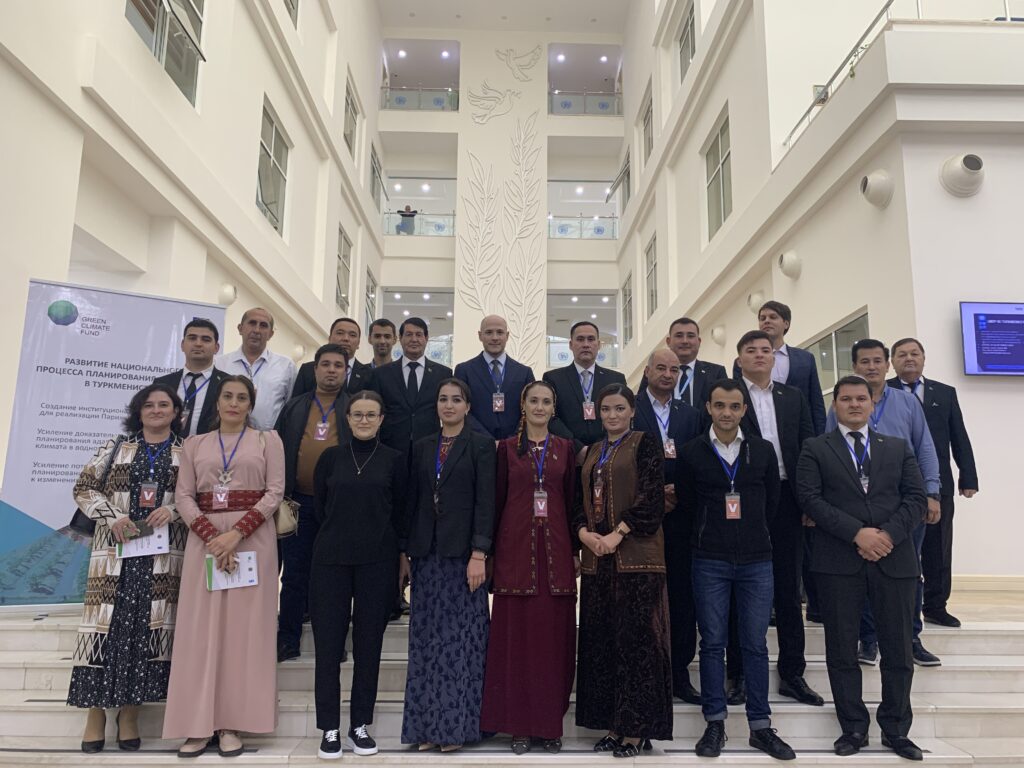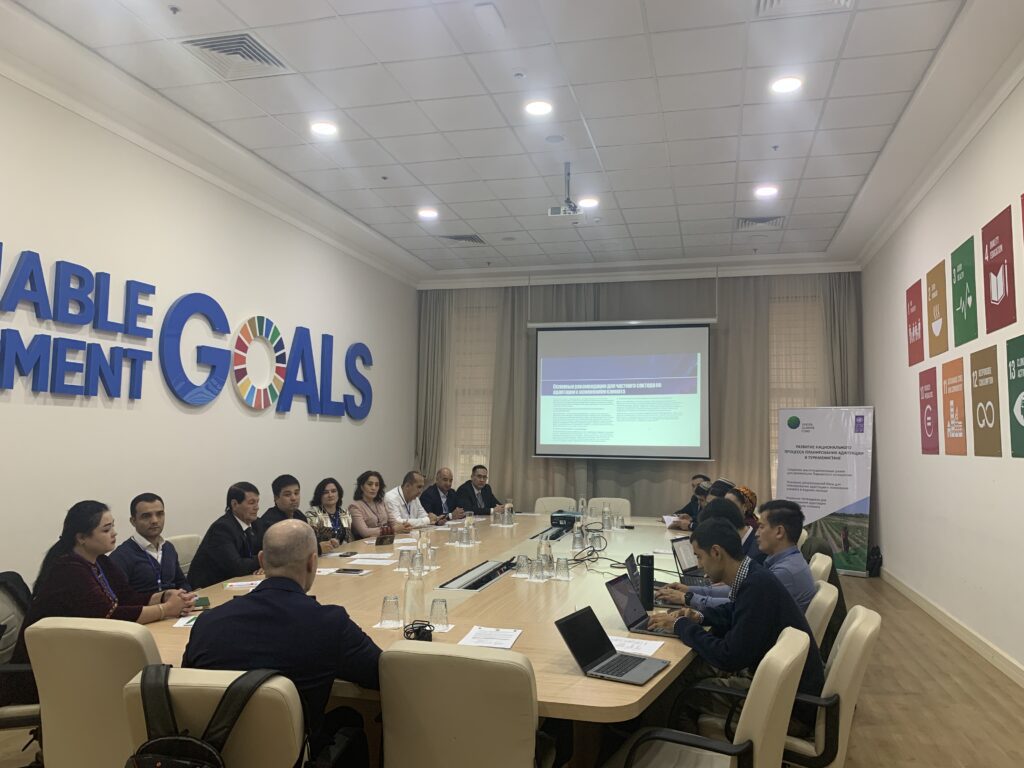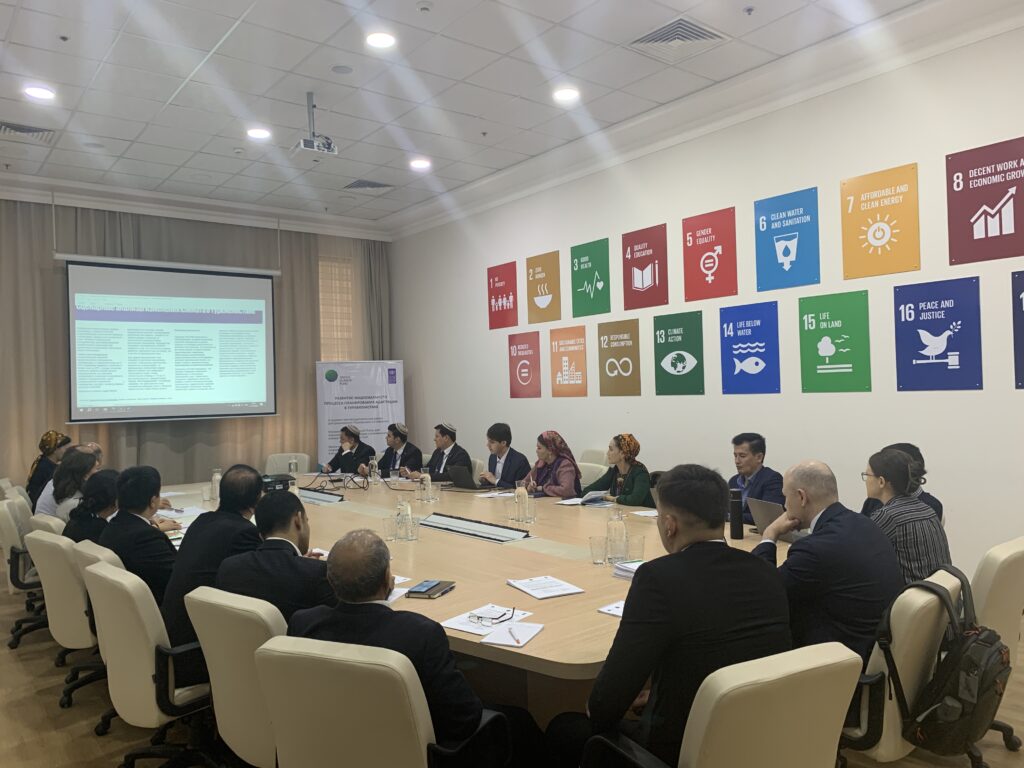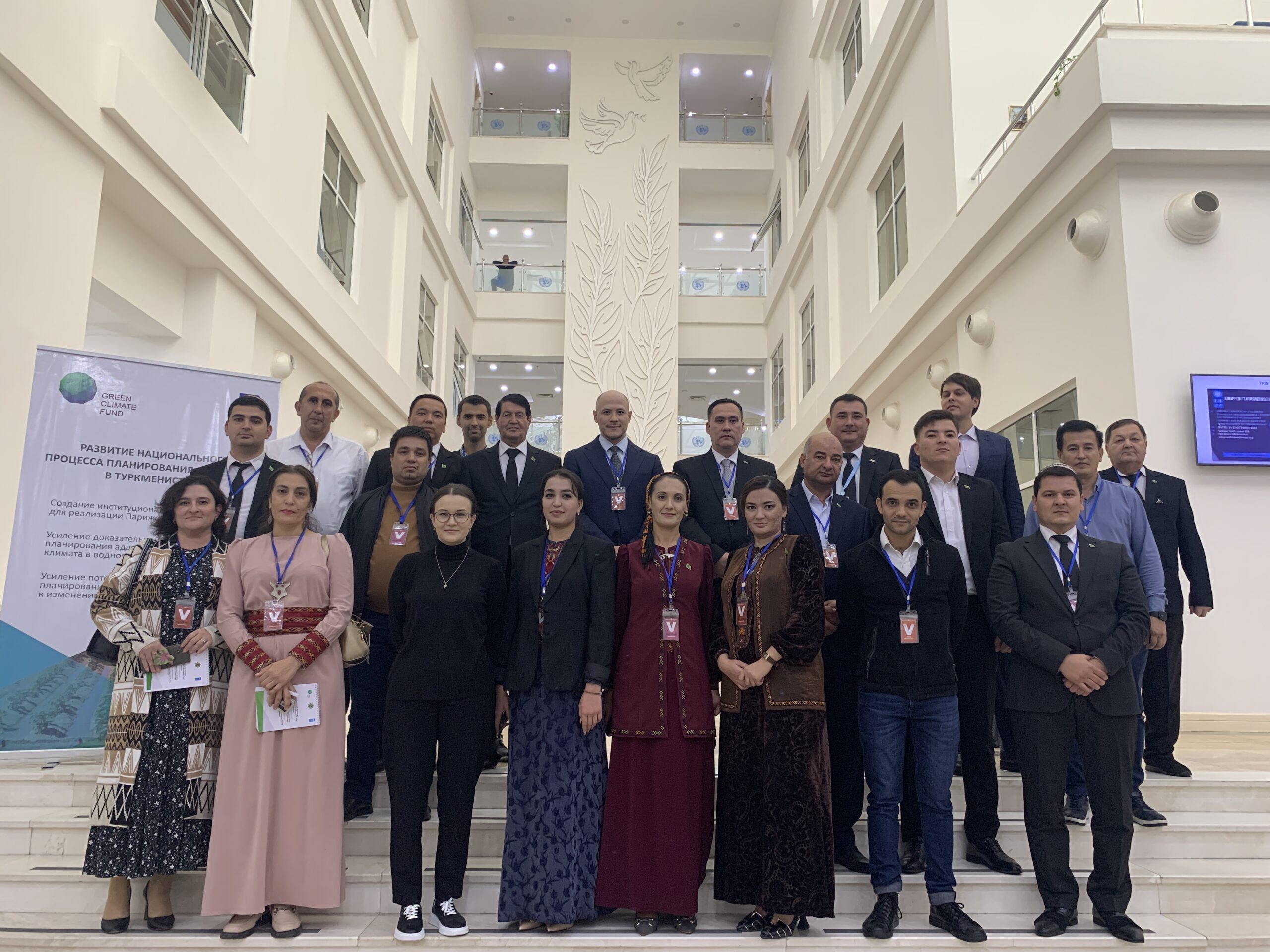The series of seminars on the topic “Climate Agenda: Features of Climate Risks and Water Security” continues, and this time the discussion continued in Ashgabat.
The main goal of the seminars is to expand the knowledge and potential of the private sector of Turkmenistan on issues of climate risks and the consequences of climate change, as well as to explore opportunities for taking adaptation measures. Our company actively participates in these seminars in partnership with KPMG as part of a project implemented jointly with UNDP.



In the context of global climate change, Turkmenistan faces new challenges, but also great opportunities to develop sustainable solutions in the field of water security and climate risk management. These efforts are aimed at the long-term development and prosperity of the country, the use of advanced technologies and international cooperation to improve the lives of the population.
Climate Risk Management Potential
Turkmenistan, located in a zone with unique natural conditions, has significant potential for a successful response to climate change. Although the country is facing rising temperatures and frequent droughts, this opens up opportunities for the introduction of innovative solutions and improvements in agriculture, energy and the environment.
Key opportunities include:
Adaptation to drought conditions. Turkmenistan is actively working on strategies for adaptation to climate change, which improves the resilience of agriculture and prevents the negative effects of droughts. The introduction of sustainable farming methods helps protect land from desertification and increase crop yields.
Innovation to overcome climate risks. The country is seeing opportunities to apply new technologies, such as climate monitoring systems, which help manage natural resources effectively and minimize the impact of extreme weather conditions.
Preservation of biodiversity and ecosystems. Turkmenistan is actively working on projects to protect unique ecosystems, which helps strengthen the ecological balance and maintain sustainable biodiversity in regions such as the Karakum Desert.
Water security: a new era of water management
Water resources are a critical element of Turkmenistan’s sustainable development. While the country relies on transboundary rivers and groundwater, new approaches to managing and modernizing water infrastructure offer opportunities to improve water supply and conserve water supplies.
Positive aspects and opportunities for water management include:
Improving transboundary cooperation. Turkmenistan actively participates in international initiatives on rational use of water resources, which contributes to the sustainable distribution of water between the countries of the region. This increases trust and strengthens cooperation between the Central Asian states.
Rational use of water in agriculture. The introduction of modern irrigation systems, such as drip irrigation, helps to significantly reduce water losses and improve the productivity of agricultural land, which has a positive impact on the country's economy and food security.
Investments in water infrastructure. Turkmenistan pays great attention to the modernization of its water infrastructure, which allows for the effective management of water resources and ensures their availability to the population and the economy. This also contributes to the sustainable development of agriculture and industry.
Strategies for a sustainable future
Turkmenistan strives to create sustainable water security and effectively manage climate risks. The main areas of development include:
Development of a national water strategy. The country is making significant steps towards creating a comprehensive strategy aimed at improving the use of water resources and preventing their deficit. This strengthens Turkmenistan’s position in the international arena as a leader in water management in arid regions.
International partnership. Active cooperation with international organizations allows Turkmenistan to develop and implement innovative solutions for water management and adaptation to climate change.
Environmental initiatives and technologies. The introduction of environmentally sustainable technologies, such as water purification and recycling systems, helps improve water supply and minimize the impact of climate change on natural resources.
Conclusion
Turkmenistan is actively using opportunities to adapt to climate change and improve water security. The introduction of advanced technologies, international cooperation and active participation in regional projects allow the country to successfully cope with climate challenges and open up new paths for sustainable development. Such initiatives strengthen the economy, improve living conditions of the population and help protect natural resources for future generations.

